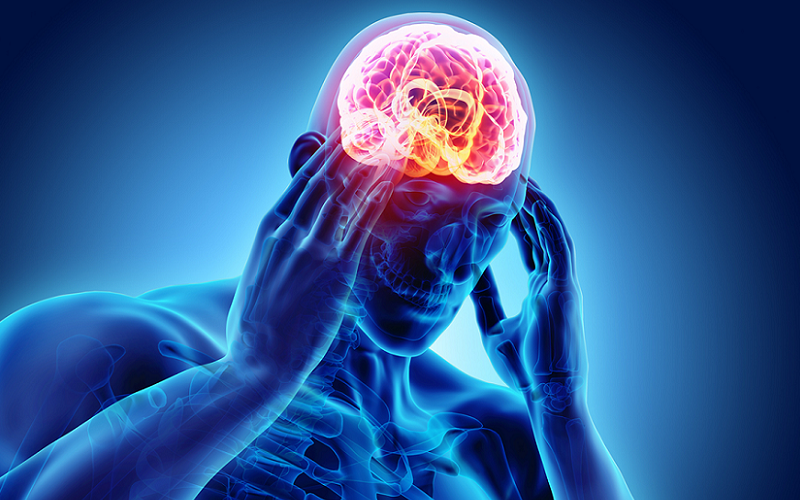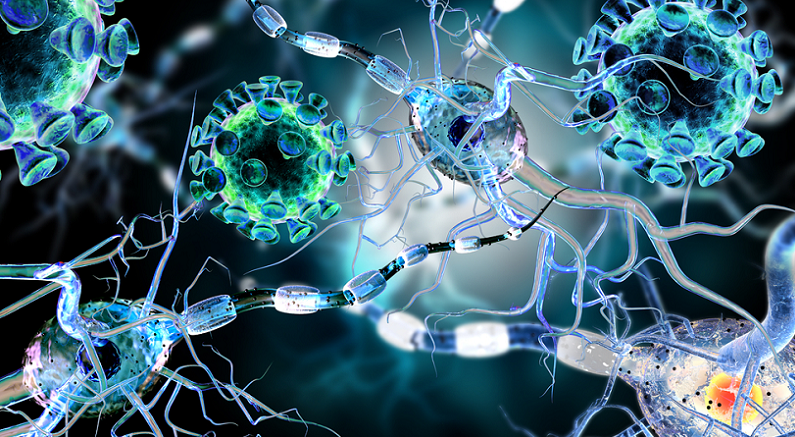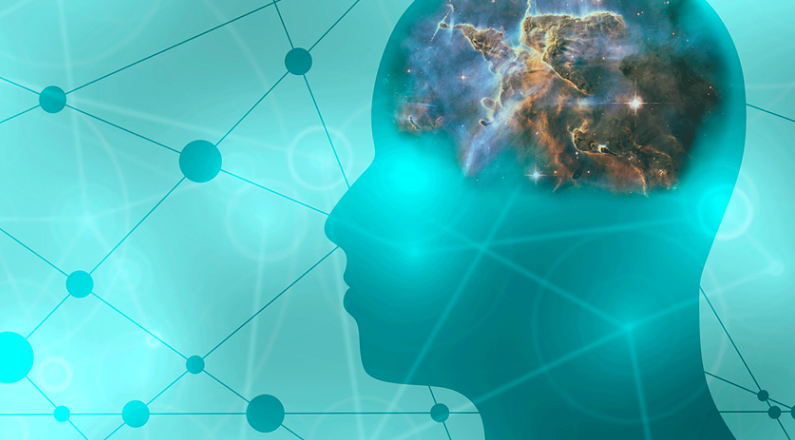
The human brain, a marvel of nature, possesses an extraordinary ability to adapt and evolve in response to experiences, learning, and even injury. This remarkable capacity is known as neuroplasticity, a concept that has revolutionized our understanding of brain recovery and rehabilitation. At the heart of neuroplasticity are neurons, the brain’s building blocks, which can reorganize themselves in astonishing ways after injury, forging new connections and pathways to compensate for lost functions.
Contents
- Introduction to Neurons and Neuroplasticity
- The Science of Neuroplasticity
- Neuronal Adaptation After Injury
- Enhancing Neuroplasticity for Recovery
- References
Introduction to Neurons and Neuroplasticity
The human brain’s capacity for adaptation and change, especially in the face of injury, is both fascinating and crucial for rehabilitation and recovery.
Definition of Neuroplasticity
Neuroplasticity, a compound of “neuro” (pertaining to nerves or the nervous system) and “plasticity” (the quality of being easily shaped or molded), refers to the brain’s ability to reorganize itself by forming new neural connections throughout life. This ability is not limited to the developmental phase but extends into adulthood, offering the brain resilience against damage and the capacity for adaptation and learning.
The concept of neuroplasticity is central to understanding how the brain evolves, learns, and recovers from injuries. It overturns previous beliefs that the adult brain is a static, unchangeable entity, highlighting instead its continuous capacity for change. This adaptability is crucial for recovery from brain injuries, allowing for compensation of lost functions and the improvement of cognitive and physical abilities through targeted therapies and exercises.
The Role of Neurons in Neuroplasticity
Neurons are the basic working units of the brain, designed to transmit information to other nerve cells, muscle, or gland cells. Each neuron consists of a cell body, dendrites, and an axon, which facilitate the transmission of electrical and chemical signals. The unique structure of neurons supports their function in the nervous system, enabling complex processes of communication and signaling essential for brain function and neuroplasticity.
Neurons communicate through synapses, where the axon terminal of one neuron meets the dendrite of another. This synaptic communication involves the release of neurotransmitters, which cross the synaptic gap and bind to receptors on the receiving neuron, thus facilitating the transfer of information. Over time, these synaptic connections can strengthen or weaken, leading to the formation of new networks. This synaptic plasticity is a fundamental aspect of neuroplasticity, underpinning the brain’s capacity to adapt to new learning experiences or recover from injuries.
The Science of Neuroplasticity
Neuroplasticity is a multifaceted phenomenon characterized by the brain’s ability to change throughout an individual’s life. Its discovery marked a paradigm shift in neuroscience, revealing that our brains are far from being static entities; they are dynamic and constantly evolving in response to our experiences, behaviors, and the environment.
Types of Neuroplasticity
Neuroplasticity manifests in two primary forms: structural and functional, each highlighting a different aspect of the brain’s capacity to adapt.
Structural Plasticity: Changes in the Physical Structure of the Brain
Structural plasticity refers to the brain’s ability to physically change its structure in response to learning, experience, or injury. This can include changes in the connections between neurons, such as the formation of new synapses or the pruning of unused connections. It can also involve more significant changes, such as the growth of new neurons in certain areas of the brain, a process known as neurogenesis. Structural changes are a testament to the brain’s remarkable flexibility and its ongoing ability to adapt to new challenges and environments [1].
Functional Plasticity: Changes in the Brain’s Functional Activities
Functional plasticity describes the brain’s ability to move functions from a damaged area of the brain to undamaged areas. This type of plasticity allows the brain to compensate for injury or disease by reallocating functions to healthy regions. For instance, if one hemisphere is damaged, the other may take over some of its functions, demonstrating the brain’s incredible resilience and capacity for adaptation.
Mechanisms of Neuroplasticity
At the core of neuroplasticity are several key mechanisms that enable the brain to remodel itself. These mechanisms are essential for both learning new skills and recovering from brain injuries.
Synaptogenesis: Formation of New Synaptic Connections
Synaptogenesis is the process by which neurons form new synapses with other neurons, facilitating the creation of new pathways for information flow. This process is crucial for learning and memory and plays a significant role in the brain’s recovery from injury. By forming new connections, the brain can establish alternate routes for information processing, bypassing damaged areas [2].
Synaptic Pruning: Removal of Weak Neural Connections
Synaptic pruning is the process of eliminating weaker synaptic connections while strengthening the more frequently used ones. This mechanism is vital for the refinement of neural networks, ensuring that the brain remains efficient and adaptable. Pruning helps to streamline communication between neurons, optimizing the brain’s functionality and its ability to adapt to new situations.
Neurogenesis: Creation of New Neurons in Certain Brain Regions
Once believed to be impossible in adults, neurogenesis, the birth of new neurons, has been observed in specific areas of the brain, such as the hippocampus. This process contributes to the brain’s plasticity and its capacity for learning and memory. Neurogenesis offers new avenues for recovery, suggesting that the brain can generate new cells to replace those lost to injury.
Factors Influencing Neuroplasticity
Neuroplasticity is influenced by various factors, from genetics to environmental stimuli. Understanding these influences is crucial for harnessing neuroplasticity’s potential for rehabilitation and cognitive enhancement.
Age and Neuroplasticity
While neuroplasticity occurs throughout the lifespan, its capacity varies with age. Children’s brains are highly plastic, enabling rapid learning and adaptation. In adults, while plasticity is more limited, it remains a powerful force for change and recovery, illustrating that the brain retains its adaptability well into later life.
The Impact of Environment and Experiences
The environment and individual experiences play a significant role in shaping neuroplasticity. Engaging in new activities, learning skills, and physical exercise can enhance the brain’s plasticity, improving cognitive function and aiding recovery from brain injuries [3].

Neuronal Adaptation After Injury
The brain’s response to injury is a testament to its resilience and adaptability. Neuroplasticity plays a pivotal role in this process, enabling the brain to compensate for lost functions and to find new ways to accomplish tasks. Understanding how neurons adapt following injury is crucial for developing effective rehabilitation strategies and for supporting the recovery process.
The Immediate Response to Brain Injury
When the brain is injured, a cascade of events is triggered, starting from the immediate aftermath of the injury to the longer-term processes of adaptation and recovery.
Neuronal Damage and Death
The immediate effect of brain injury is often neuronal damage and death. Depending on the severity and location of the injury, this can lead to significant loss of function. The brain responds to this damage with a variety of mechanisms designed to limit the injury’s impact and to begin the process of recovery.
Inflammatory Responses and Their Role in Healing
Following injury, the brain initiates an inflammatory response, which, while essential for healing, can also contribute to further damage if not properly regulated. This response is part of the brain’s natural defense mechanism, clearing debris and damaged cells to pave the way for healing and regeneration.
The Role of Neuroplasticity in Recovery
Neuroplasticity is central to the brain’s recovery process, offering pathways to regain lost functions or to compensate for damaged areas through adaptation and reorganization.
Rerouting of Neural Pathways
One of the key strategies the brain employs to recover from injury is the rerouting of neural pathways. This involves forming new connections that bypass damaged areas, allowing information to be processed through alternative routes. This capacity for rerouting is a prime example of the brain’s adaptability and is crucial for recovery from many types of brain injury.
Strengthening of Existing Connections
Alongside the formation of new pathways, the brain also strengthens existing connections. This process, known as synaptic plasticity, involves the reinforcement of synapses that are frequently used, enhancing the efficiency of neural networks and supporting the recovery of functions compromised by injury [4].
Formation of New Neuronal Connections
The creation of new neuronal connections, or synaptogenesis, is another vital aspect of neuroplasticity in recovery. By establishing new links between neurons, the brain can develop new networks that support the restoration of functions lost due to injury.
Challenges and Limitations
Despite the brain’s remarkable capacity for adaptation, there are challenges and limitations to the recovery process, influenced by various factors.
Factors Limiting Neuroplasticity After Injury
Several factors can limit neuroplasticity after injury, including the age of the individual, the severity and location of the injury, and the timing of intervention. These factors can affect the extent to which the brain is able to adapt and recover, highlighting the need for personalized approaches to rehabilitation.
The Critical Period for Recovery and Its Implications
Research suggests that there is a critical period following injury during which interventions are most effective. This period represents a window of opportunity for leveraging neuroplasticity to support recovery. Understanding the dynamics of this critical period is essential for optimizing rehabilitation efforts and for maximizing the potential for recovery.

Enhancing Neuroplasticity for Recovery
The potential for recovery in the aftermath of brain injury is significantly influenced by the extent to which neuroplasticity can be harnessed and directed towards healing and functional restoration. A multifaceted approach that combines rehabilitation techniques, lifestyle modifications, and cutting-edge research offers the best path forward in leveraging neuroplasticity for recovery.
Rehabilitation Techniques
Rehabilitation techniques play a crucial role in enhancing neuroplasticity, employing targeted exercises and therapies designed to stimulate brain adaptation and improve function.
Physical Therapy and Exercise
Physical therapy and exercise are foundational components of rehabilitation, promoting neuroplasticity through movement and physical activity. Regular, structured exercise can help strengthen neural connections and support the formation of new pathways, significantly contributing to motor recovery and overall brain health.
Cognitive and Behavioral Therapies
Cognitive and behavioral therapies are designed to address the cognitive and emotional aspects of recovery from brain injury. These therapies can help retrain the brain in areas such as memory, attention, and executive function, as well as assist in managing emotional responses and psychological well-being.
Technological Interventions
Advancements in technology have led to the development of innovative interventions that can stimulate neuroplasticity and support recovery. Techniques such as transcranial magnetic stimulation (TMS) and virtual reality (VR) therapy offer new ways to engage the brain in recovery processes, providing targeted and immersive experiences that can enhance rehabilitation outcomes.
Lifestyle Factors and Neuroplasticity
In addition to rehabilitation techniques, lifestyle factors play a significant role in supporting neuroplasticity and overall brain health.
Diet and Nutrition
A balanced diet rich in nutrients supports brain health and can enhance neuroplasticity. Omega-3 fatty acids, antioxidants, and vitamins are among the nutrients that contribute to the maintenance and growth of neural connections, supporting recovery and cognitive function [5].
Sleep and Its Role in Brain Health
Sleep is essential for brain health and neuroplasticity. It plays a critical role in memory consolidation, the removal of toxins from the brain, and the maintenance of the pathways necessary for learning and adaptation. Ensuring adequate and quality sleep is a key component of supporting brain recovery and neuroplasticity.
Stress Management and Mental Health
Managing stress and maintaining mental health are critical for enhancing neuroplasticity. Chronic stress can hinder the brain’s ability to adapt and recover, while strategies for stress reduction, such as mindfulness and relaxation techniques, can support neuroplasticity and aid in the recovery process.
Emerging Research and Future Directions
The field of neuroplasticity is rapidly evolving, with ongoing research uncovering new insights and potential therapies that could further enhance recovery from brain injury.
Advances in Neuroplasticity Research
Emerging research continues to shed light on the mechanisms of neuroplasticity and how they can be harnessed more effectively for rehabilitation. Studies exploring the use of stem cells, gene therapy, and novel pharmacological approaches offer promising avenues for enhancing neuroplasticity and supporting brain recovery.
Potential Therapies on the Horizon
As our understanding of neuroplasticity deepens, new therapies are being developed that could revolutionize the approach to rehabilitation from brain injury. These potential therapies, ranging from bioengineered molecules to enhance synaptic connections to technologies that directly stimulate neural networks, represent the cutting edge of efforts to harness the brain’s inherent capacity for recovery.
References
[1] Neuroplasticity after Traumatic Brain Injury
[2] Neuroplasticity: how lost skills can be regained after injury or illness
[3] Neuroplasticity Therapy: How It Helps Brain Injury Recovery
[4] Neuroplasticity: re-wiring the brain
[5] Does Brain Plasticity Increase After a Head Injury?

